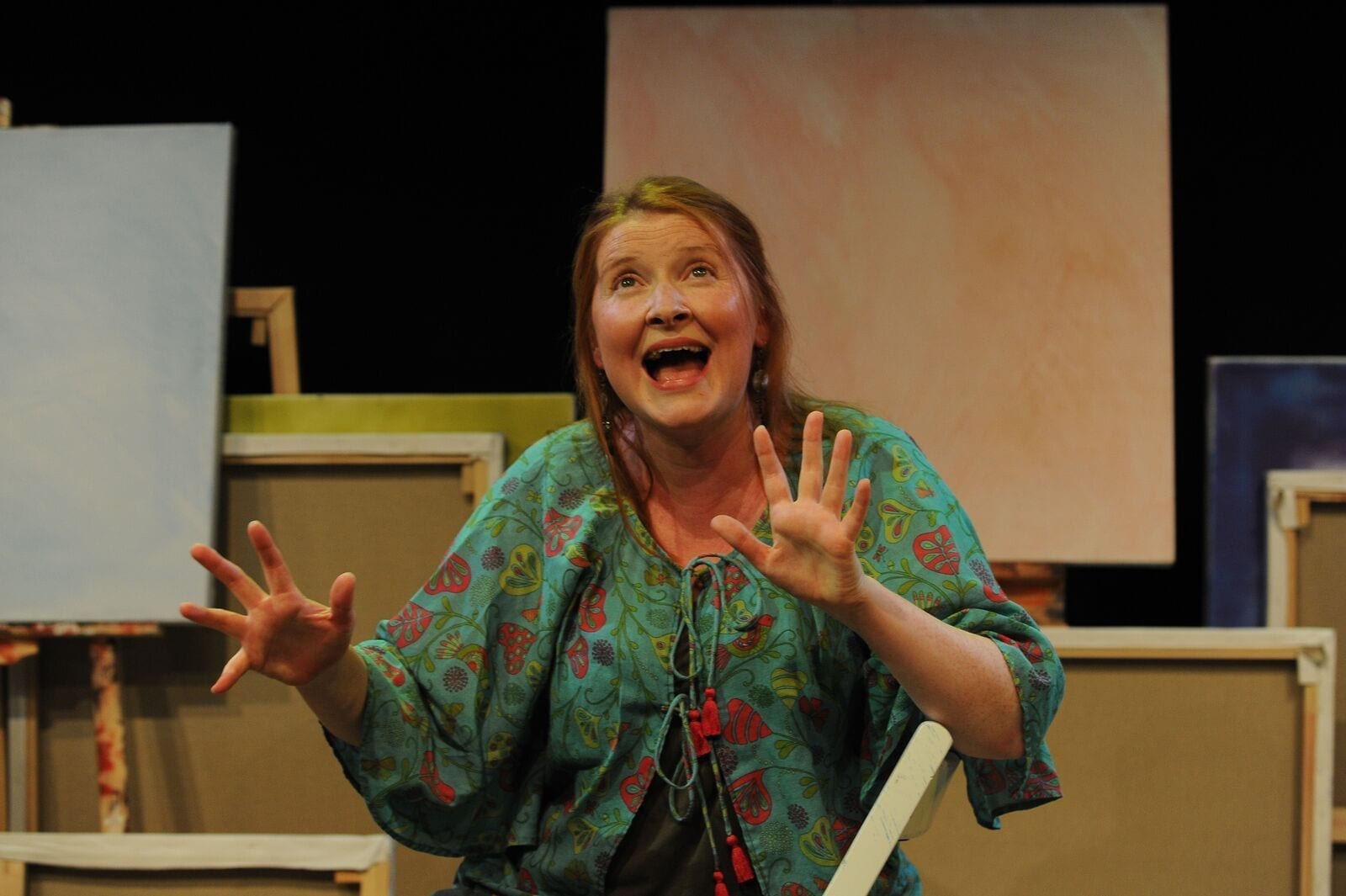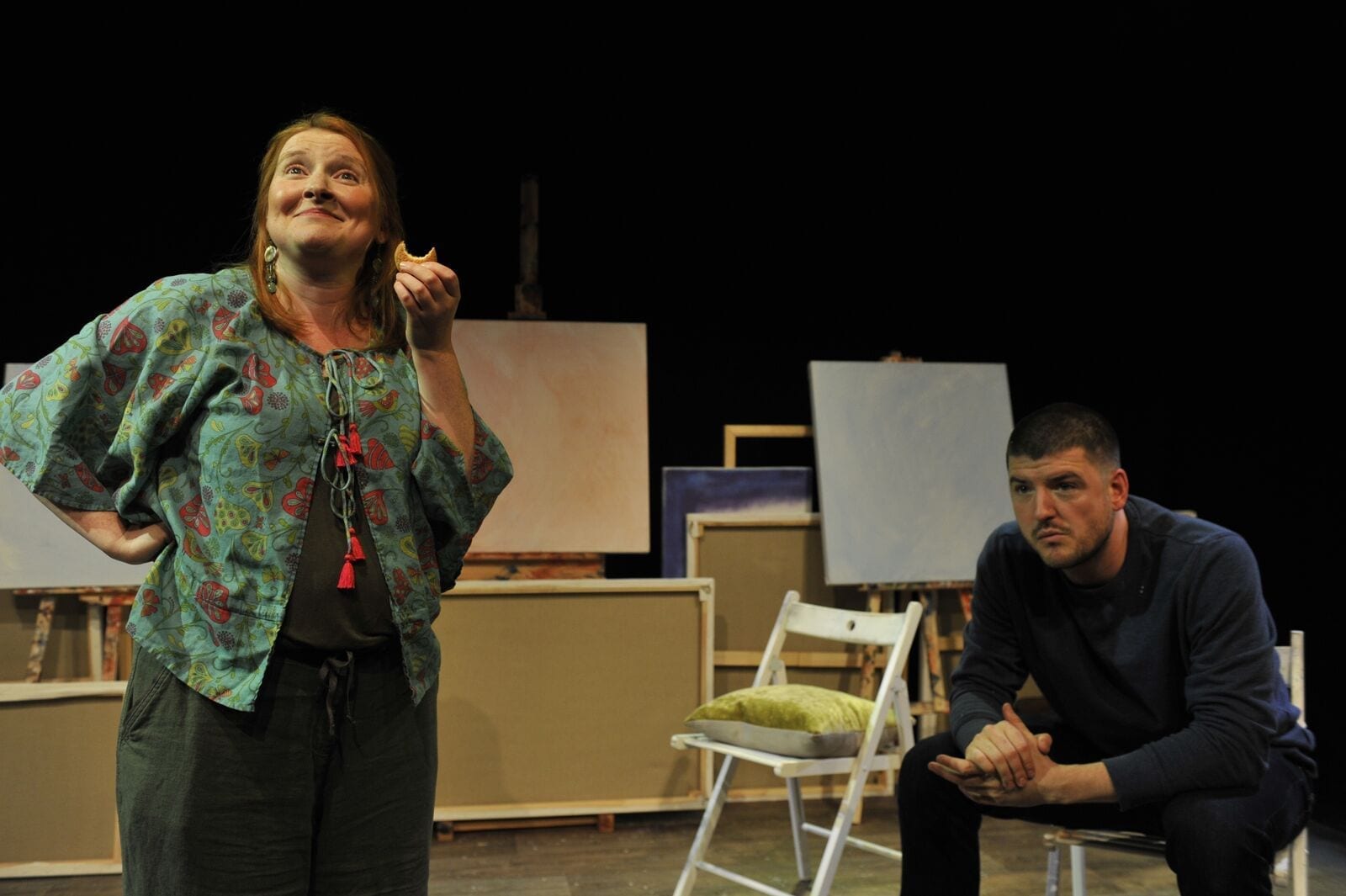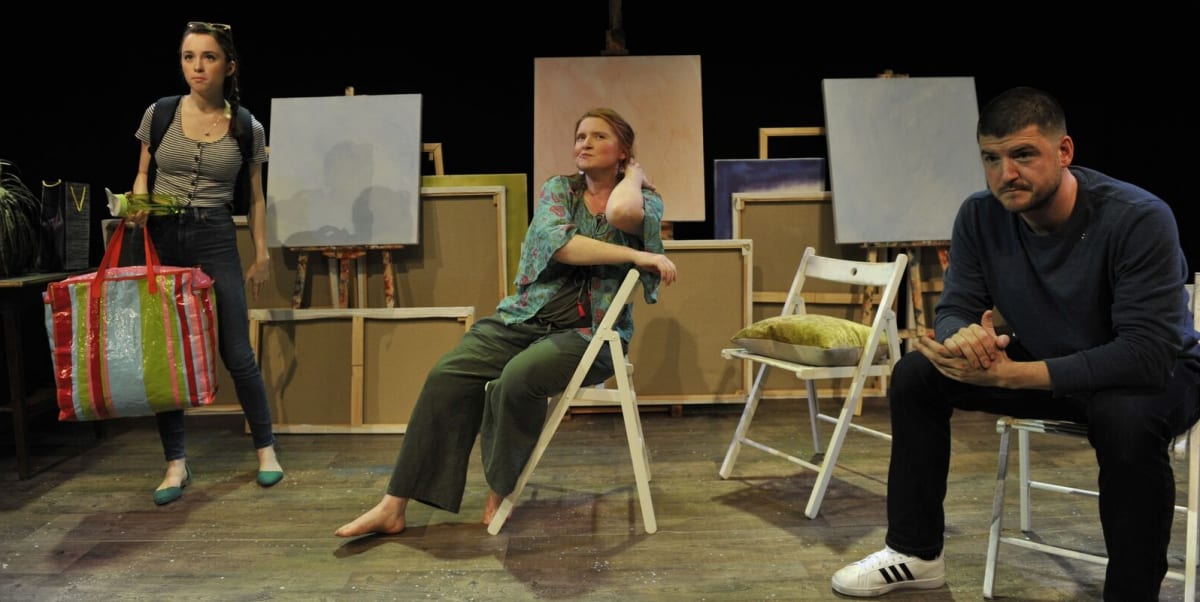Sitting, a play by Katherine Parkinson, is about three portrait sitters. They pose for an unseen and unheard painter in a studio, which is filled with canvases stacked up against each other.
The first sitter is Mary (Hayley Jayne Standing) who is a beneficent middle-aged woman; she sits rather nonchalantly with lustrous auburn hair. She is perhaps the most forthcoming with information about her life as she discusses her dead sister, young daughter, how she travelled around Europe, and her love of these therapeutic sitting sessions. Hayley Jayne Standing plays the role as a charming optimist with a beaming smile, acknowledging the sadness she has faced, while working it into a ‘carpe diem’ philosophy.

The second sitter is Cassandra. Grace Hogg-Robinson plays this young woman as an anxious yet compassionate stereotypical millennial. She fidgets in her seat while fretting over her appearance as any selfie addict would, wanting an airbrushed kind of portrait. She mutters about banal things like any normal person does, but she reveals her agenda for coming to these sittings – her choice of this portrait artist is not accidental. Mary the first sitter, who died when Cassandra was young, is her mother. But Cassandra, which is actually her stage name, is losing her connections to her mother and struggling to remember her features and demeanour as the memories fade. This is what compels her to seek out this mysterious artist since he painted her many times.
The third and final sitter, played by James Alexandrou, is Luke – a down-to-earth cockney geezer. He initially strips for the sitting, mistakenly thinking he’s posing for a nude painting, then hastily puts his clothes back on when he finds out it’s not the case. After this mishap, he starts to talk about his family and father who abandoned him.
All three sitters appear onstage simultaneously but they take turns to speak. They occupy the same space but are separated by chunks of time. We are invited to study their movements and ways of speaking microscopically, as if every gesture is seen through a jeweller’s eye, since the audience assumes a position identical to the gazing painter’s himself.

While we see the artistic process, we are made to question the character of the unseen painter. The finished canvases are seen via projector: they are thick impasto portraits that showcase the painter’s Rembrandt-like accuracy and striking use of vivid blues, pinks and oranges. However, in reassessing the power dynamic between painter and painted, we have to ask how the painter is seen himself. He shares intimate relationships with all the sitters, Mary being his favoured muse, but we can only piece together an idea of his personality through the monologues of these sitters.
Sitting is a fabulous inspection of the art of painting where the actors marry great delivery of their respective monologues with precise and subtle posturing.

